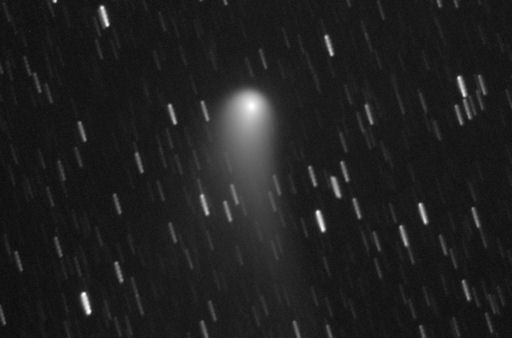INCOMING COMET: In little more than a month, Comet PanSTARRS will cross the orbit of Mercury and probably brighten to naked-eye visibility as it absorbs the of the nearby sun. Sky watchers around the world will be looking for it in the sunset skies of early March, when it passes closest to the sun and to Earth. Until then a telescope is required; here is the view last night through a 0.3-meter-diameter reflector in Argentina:
A team of astronomers led by Martin Masek took the picture using the remotely-controlled F(/Ph)otometric Robotic Atmospheric Monitor--"FRAM" for short. "The stars are trailed in this 9x120s exposure, which tracked the comet," explains Masel.
Currently, the comet ranks about 8th magnitude, dimmer than the human eye can see, but it could brighten 100-fold on March 10th when it makes its closest approach to the sun (0.3 AU). The latest curves suggest that PanSTARRS will emerge glowing about as brightly as a 3rd magnitude star, similar to the stars in the Big Dipper.
There might, however, be surprises in store. Comet PanSTARRS has never been to inner solar system before. It is falling in from the Oort cloud, a great swarm of comets beyond Neptune and Pluto unaltered by the warmth of the sun. When Comet PanSTARRS dips it toe inside the orbit of Mercury for the first time, almost anything could happen ranging from an anticlimatic "bake-out" to a spectacular disruption. Stay tuned for updates. [3D Orbit]


Comments